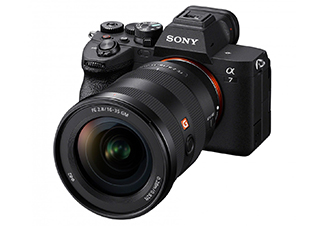The Exmor R CMOS sensor in the A7 IV is a new 33-megapixel full-frame back-illuminated Exmor R sensor. While Sony does not market it, the new sensor features dual native ISO, with the second step kicking in at ISO 3200. The sensor, according to Sony, has a dynamic range of 15 stops.
The new sensor is paired with the newest generation BIONX XR image processor, which is also featured in Sony’s flagship Alpha 1. In comparison to its predecessor, the camera can shoot at 10 frames per second with AF/AE tracking and has a bigger buffer capacity. The autofocus technology employs 759 phase-detection AF points with real-time object tracking and real-time Eye AF for tracking humans, birds, and animals in both stills and video for the first time on a Sony camera.
The A7 IV can record 4K video utilizing the whole sensor width. For all frame rates including and below 30fps, the picture is downsampled from 7K to 4K. Unlike the A7 III, the A7 IV can shoot 4K at 60 frames per second. However, it can only do so in Super 35mm mode, which cuts the image and does not make use of the entire sensor width. In addition, unlike the A7 III, the A7 IV can now capture movies in full 10-bit depth, 4:2:2 color sampling, and XAVC S-I intra-frame recording. It also supports the S-Cinetone image profile, which is often seen in Sony cinema cameras.
Sony has also included a few additional capabilities that are now only available on the A7 IV and function when used with a suitable Sony E-mount lens. When utilizing autofocus, the AF Assist mode allows focus transitions, and the Focus Map mode visualizes depth of field with colors on the screen. There is also a new Breathing Compensation function, which compresses the image somewhat on Sony lenses with focus breathing issues, ensuring that the field of vision stays consistent even when moving focus from end to end.
For fast operation, the physical design has been altered to include a new top layer mode dial for Auto/P/A/S/M and MR modes, as well as a lower-layer dial for Still/Movie/S&Q modes. The display has been updated and now has a fully articulating design that can be rotated. The resolution of the 3.68-million-dot EVF has been increased by 1.6x. The dual card slots have been upgraded to accommodate SD cards and either SD or CFexpress Type A cards. On the side, a full-size HDMI connection has been added for external recording and monitoring. The recording button has been relocated to the top for easier access, and the magnesium alloy weather-resistant housing has been enlarged for better grip.
Overall, the new A7 IV outperforms its predecessor in terms of stills and, notably, video capabilities.The new Alpha 7 IV and HVL-F60RM2 flash camera will be available across all Sony Center, Alpha Flagship stores, www.ShopatSC.com portal, major electronic stores, and ecommerce websites (Amazon and Flipkart) from 10th February 2021 onwards for Rs. 242,490/- for the body only. A kit version with Sony’s FE 28-70mm F3.5-5.6 OSS zoom lens will be offered Rs. 262,490/-.

